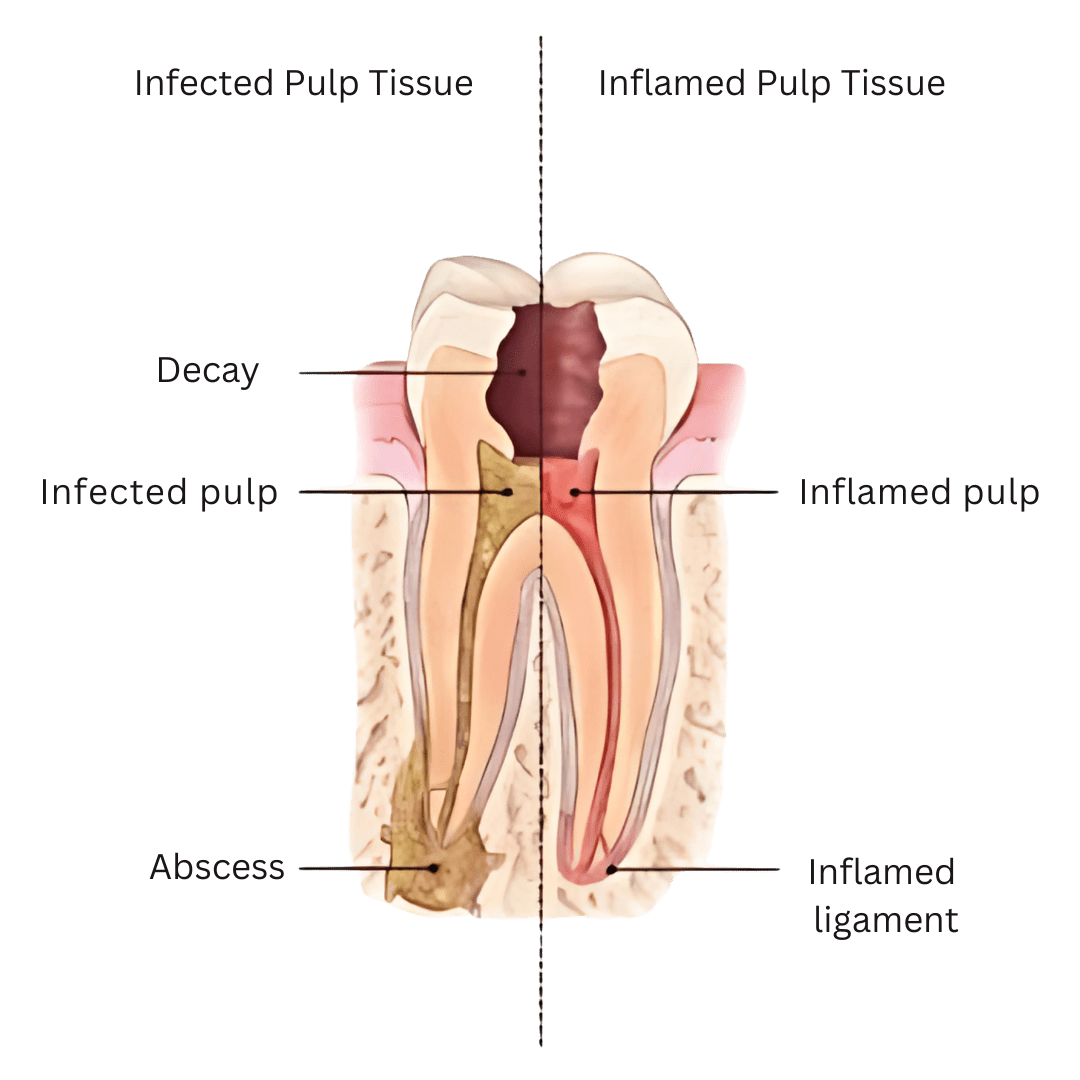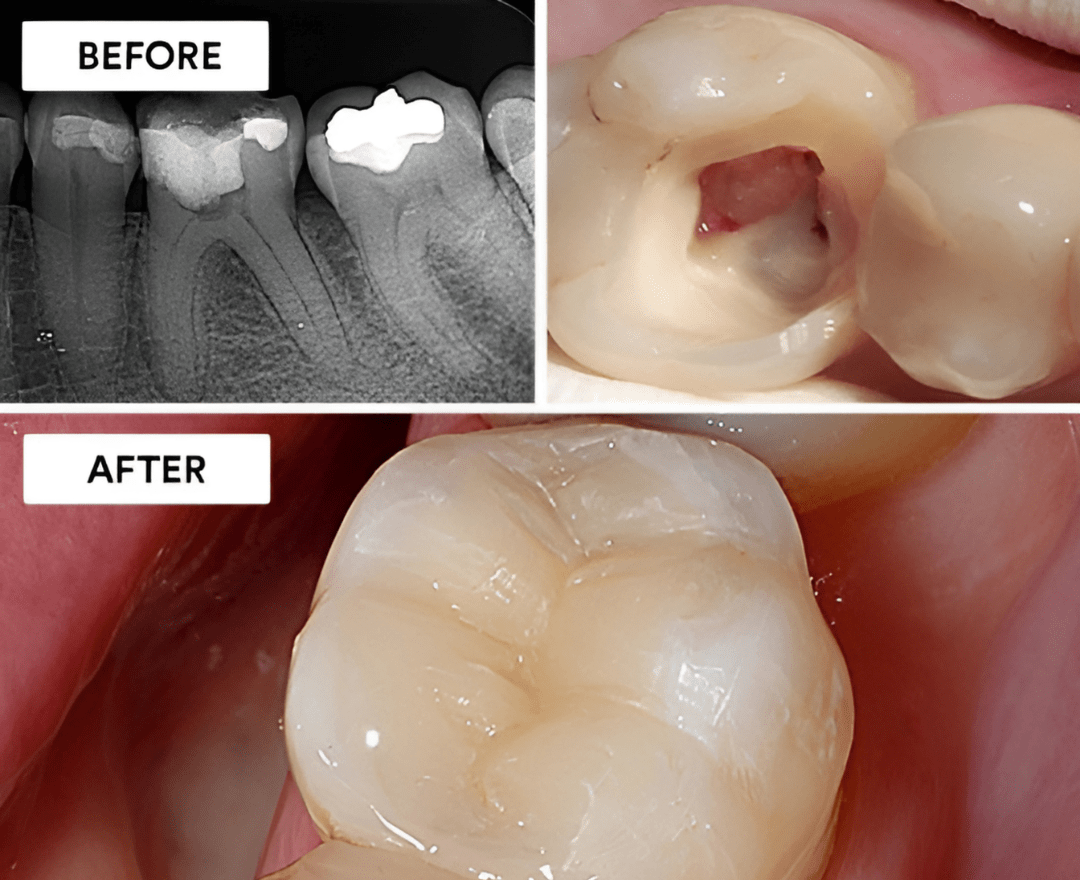When you hear the words “root canal,” what comes to mind? For many, it conjures up images of excruciating pain, long hours in the dentist’s chair, and a procedure to dread. But what if we told you that root canals have evolved dramatically? Thanks to advancements in modern dentistry, they’re no longer the stuff of nightmares but rather a quick, efficient, and nearly painless way to save your teeth.
What Is a Root Canal?

To understand the procedure’s importance, let’s start with the basics. A root canal is a dental treatment designed to save a tooth that’s severely decayed or infected. It involves removing the damaged or infected pulp from the inside of the tooth, cleaning and disinfecting the area, and sealing it to prevent further infection.
The pulp is the soft tissue inside your tooth that contains nerves, blood vessels, and connective tissue. When this tissue becomes infected—due to deep decay, repeated dental procedures, or a crack in the tooth—it can cause intense pain and even lead to abscesses.
Without treatment, the infection can spread, potentially resulting in tooth loss and other complications. That’s where the root canal comes in—it’s a tooth-saving procedure that restores oral health and relieves pain.
Benefits of Root Canal Treatment
For decades, root canals had a bad reputation. Older techniques often made the procedure lengthy and uncomfortable. However, dentistry has come a long way, transforming this once-dreaded treatment into a seamless experience. Here are the key advancements that have changed the game:
Modern local anesthetics are incredibly effective, ensuring that patients experience little to no pain during the procedure. For those with dental anxiety, dentists also offer sedation options, such as nitrous oxide or oral sedatives, to help you relax.
2. Advanced Imaging Technology
State-of-the-art imaging tools, like digital X-rays and 3D cone-beam computed tomography (CBCT), provide dentists with detailed views of the tooth and surrounding structures. This precision allows for better diagnosis and treatment planning, reducing complications.
3. Rotary Instruments
Gone are the days of manual files that made the process slow and arduous. Modern root canal treatments use rotary instruments powered by electric motors. These tools are faster, more efficient, and more comfortable for the patient.

4. High-Quality Materials
The materials used to seal the tooth after a root canal have also improved significantly. Gutta-percha, a biocompatible material, is now the standard for filling the root canals, ensuring a tight seal that prevents reinfection.
5. Microscopic Dentistry
Many dentists now use operating microscopes during root canals. These tools provide magnification and illumination, allowing for greater precision when cleaning and sealing the tooth.
6. Shorter Recovery Times
With these advancements, most patients recover quickly and experience minimal post-procedure discomfort. Over-the-counter pain relievers are usually sufficient for managing any soreness.
Root Canal Procedure
Still nervous? Knowing what to expect can help ease your fears. Here’s a step-by-step breakdown of a typical modern root canal procedure:

Your dentist will begin with a thorough examination, often using digital X-rays to assess the extent of the damage.
Once confirmed, they’ll numb the area with local anesthesia to ensure you’re comfortable.
2. Accessing the Pulp
A small opening is made in the tooth to access the infected pulp.
Using specialized tools, the dentist carefully removes the damaged tissue.
3. Cleaning and Shaping
The inside of the tooth is cleaned and shaped using rotary instruments to prepare it for sealing.
Antibacterial solutions are used to disinfect the area thoroughly.
4. Filling and Sealing
The cleaned canals are filled with gutta-percha to prevent reinfection.
The tooth is then sealed with a temporary or permanent filling.
5. Final Restoration
In most cases, a crown is placed over the tooth to restore its strength and appearance. This step is usually completed during a follow-up visit.
The entire process typically takes one or two appointments, depending on the complexity of the case. And thanks to modern techniques, most patients report that it’s no more uncomfortable than getting a standard filling.
Why Root Canals Are Worth It
If you’re still hesitant about getting a root canal, consider the alternative. Without treatment, the infected tooth may need to be extracted, which can lead to:
- Bone Loss: Missing teeth can cause the jawbone to deteriorate over time.
- Shifting Teeth: Gaps left by missing teeth can cause neighboring teeth to shift, leading to bite issues.
- Higher Costs: Replacing a missing tooth with a bridge or implant is often more expensive than saving it with a root canal.
A root canal preserves your natural tooth, maintaining your oral health and saving you from more invasive treatments down the line.

Addressing Common Fears
Will it hurt?
Modern root canals are virtually painless, thanks to effective anesthesia and advanced techniques. Most patients report feeling nothing more than mild pressure during the procedure.
What if it doesn’t work?
Root canals have a high success rate—up to 95%. When performed by a skilled dentist or endodontist, the treated tooth can last a lifetime with proper care.
Is it expensive?
While the cost varies depending on the tooth’s condition, root canals are generally more cost-effective than tooth extractions and replacements. Many dental insurance plans also cover a significant portion of the procedure.
Taking the Fear Out of Root Canals
If you’ve been avoiding treatment because of fear or misinformation, now is the time to reconsider. Modern dentistry has turned root canals into a routine procedure that’s efficient, effective, and—most importantly—pain-free.
Final Thoughts

Root canals no longer deserve their bad reputation. With advancements in technology and techniques, they’ve become a simple and straightforward way to save teeth and relieve pain. So, the next time your dentist suggests a root canal, remember: it’s not a nightmare—it’s the hero your tooth needs.
By taking advantage of modern dental care, you can protect your smile and your health with confidence. Don’t let outdated fears hold you back from getting the treatment you need. Schedule that appointment—your teeth will thank you!


